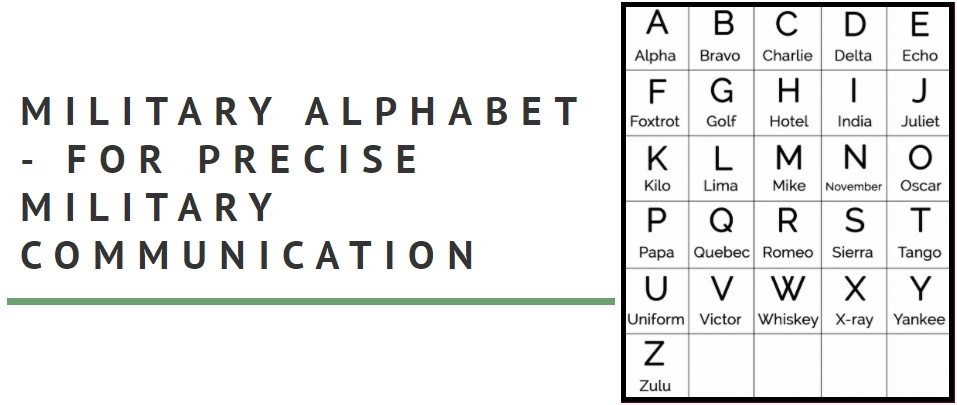
The military alphabet is now widely used in all fields of work and even for entertainment purposes. However, many people do not actually know where it originated from or why it needed to be standardised.
What we now know as ‘Foxtrot’, ‘Charlie’ and ‘Tango’ was once used in order to help make life changing choices for those battling in wars. The military alphabet consists of 26 code words and actually goes by the name International Radiotelephony Spelling Alphabet (IRSA).
It has been used during World War One and Two and could have possibly played a part towards forces being united as a front against their enemies.
But Why Did The NATO Phonetic Alphabet Need to Be Standardised?
Communication is key for nearly every situation, including fighting in wars. Mistakes were easily made due to radio miscommunications and that was because people would get confused with the pronunciation of letters that sounded similar to each other; such as D and T. It was also a struggle for soldiers between radio communications because noisy backgrounds would get in the way too.
In order to prevent this, they came up with a phonetic alphabet that would create a strong communication and a clear message without actually revealing the message itself. This meant that soldiers and radio operators would be able to send code messages to each other without risks of the messages being leaked or heard by their enemies.
Not only that, but by creating a phonetic alphabet that consisted of words and codes that were simple for everyone to use helped clear up any misunderstandings, due to the fact that many people had different regional dialects or accents and types of pronunciations that they used.
However the military alphabet should not be confused with it being a way to teach syllables or other figures of speech. It is and was used to spell out words and phrases that could be used as forms of communication.
This resulted in soldiers in all kinds of forces being able to expand the phonetic alphabet into shorthand military slang that they could use between each other. For example, ‘Bravo Zulu’ meant ‘Good Job’.
How Did It Become Standardised?
Over the years, the military phonetic alphabet changed several times. But in 1956 there was a long period of time where it was tested and researched by the International Civil Aviation Authority in 31 different countries, in order to measure out its true successes. This then led to the official international NATO alphabet also known as IRSA, being officially used by all types of U.S military, along with its allied countries.
At first the U.S government classified the use of the IRSA as being confidential, but it was then released to the public and it is still being used to this day.
Why It Plays a Significant Role to Our Generation
History could have played out differently if the NATO phonetic alphabet wasn’t standardised. Imagine if there was no solution for miscommunication, but only mistakes that continued to happen which could have resulted into a very different society from what we live in today.
The NATO phonetic alphabet also plays a significant role for most job sectors such as banking, in order to communicate with customers clearly when dealing with important matters such as large bank transfers or spelling out relevant details.
Even pilots rely on learning and understanding the military alphabet, because it is linked to the Automatic Terminal Information Service (ATIS), which is what they rely on for when they need to be updated with important information such as changes of the weather.
Since it was developed by ICAO, it’s also an important alphabet to use amongst international communities so that there is always a clear message and communication when dealing with important matters.
Our say
Standardising the NATO phonetic alphabet can be seen as a positive part of our history and is a true prime example of how the use of code and words can play an important role to our daily lives. It is also living proof that language and communication will always be important elements towards making even the smallest or biggest decisions.
